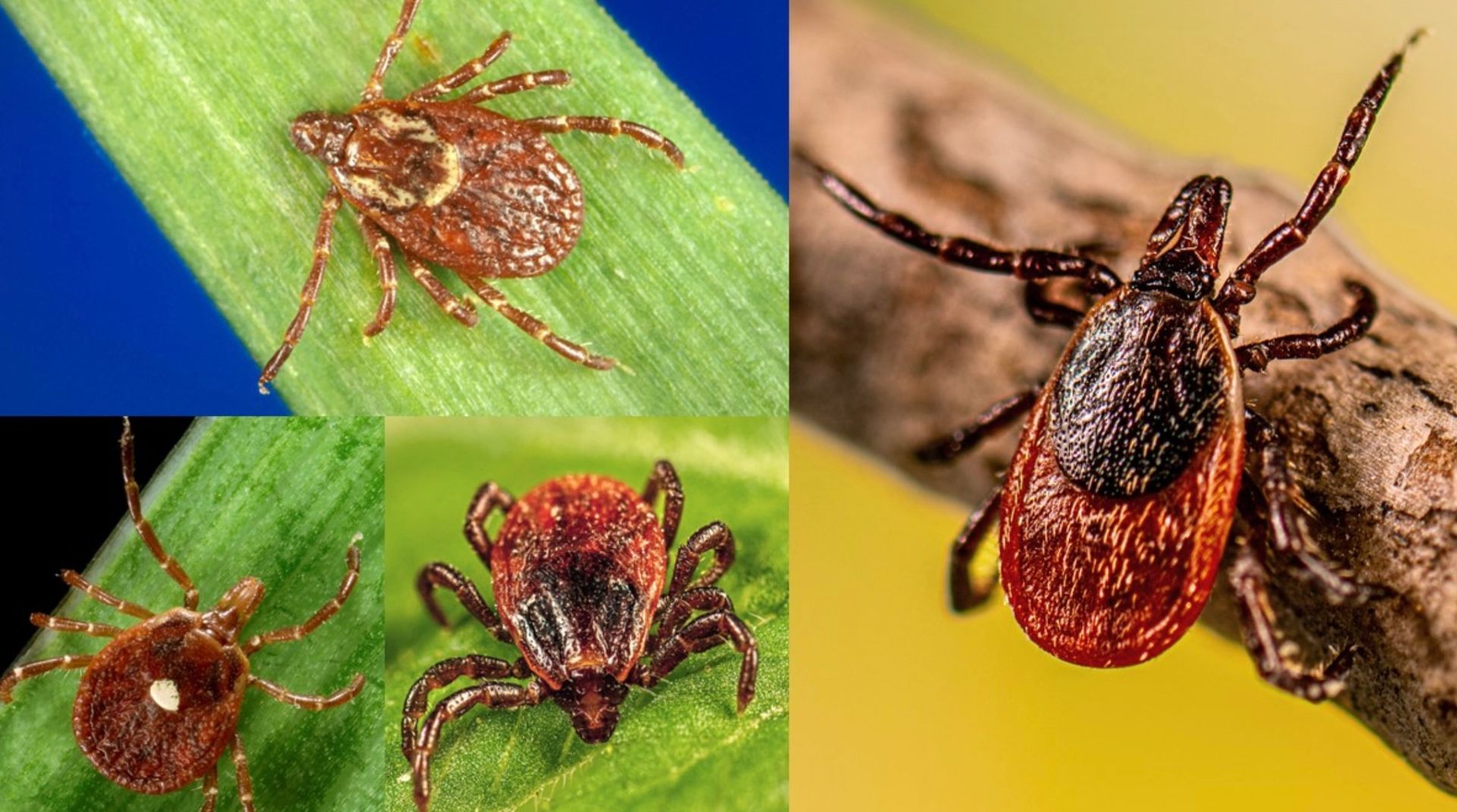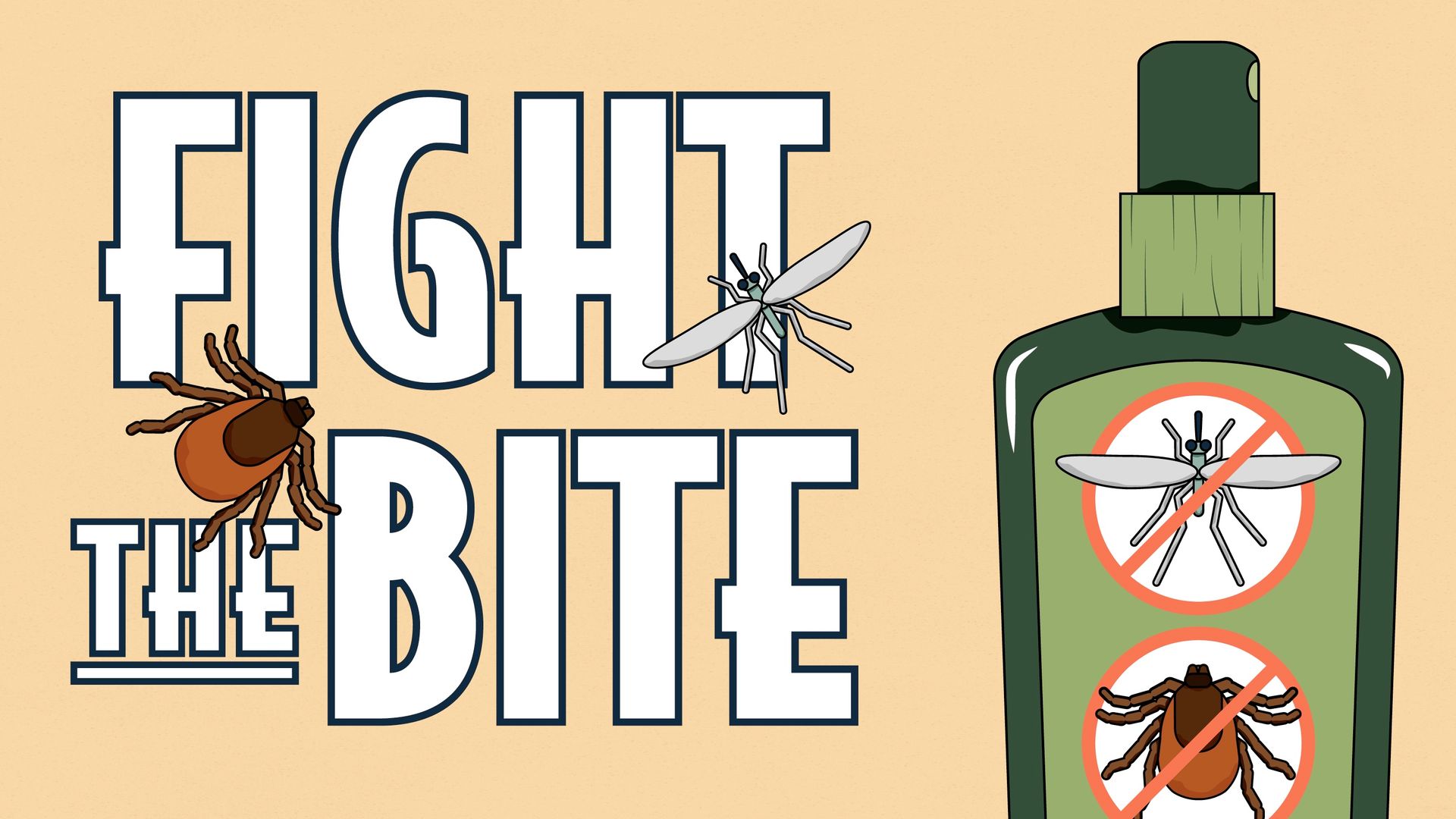It's time to talk about ticks
Unfortunately, five of the eight tick species in the U.S. known to bite humans and cause disease live in Arkansas. And since the diseases range from Rocky Mountain spotted fever, to West Nile Virus, to Tularemia (aka rabbit fever), it is wise to take steps to prevent being bitten by a tick. The adage that an ounce of prevention is better than a pound of cure is especially true here since some of those diseases can be difficult to diagnose and treat.
It is comforting to keep in mind, however, that not every tick is infected, so being bitten by a tick doesn't necessarily mean getting sick.
Where to watch out for ticks
Ticks live in grassy, brushy, or wooded areas, so when outdoors, try to avoid such areas (even in urban parks) or stay in the center of trails. Be aware that outdoor activities such as walking the dog, camping, gardening, or hunting can mean exposure to ticks.
Ticks don't have eyes, so they use other sensory receptors to find hosts. They pick up our CO2. They don't fly, but they can latch on to birds and thus can travel far.
Ticks can also live on animals such as pets. Keep your pets clean and try to prevent them from going into brushy, wooded areas where possible.
Ticks are most active during mid-day and they move more quickly in humid environments, which is unfortunate for us here in Arkansas. When outside, check for ticks regularly and if one is found, remove it promptly.

Notes on clothing
Light colored clothing makes it easier to spot ticks. Long sleeves and long pants tucked into socks or boots can help prevent ticks from getting onto your skin.
Some people like to treat their clothing with permethrin as an additional preventive measure. Pre-treated clothing is also available. However, if you have a pet cat, it is good to keep in mind that permethrin is highly toxic to cats. Discuss any questions about this with your cat's veterinarian.
Check clothing for ticks and once inside again, put your clothes in a tumble dryer on high heat for an hour, then wash the clothing as normal. If the clothes require washing first, use hot water because cold and warm water will not kill ticks.
What kind of insect repellant is best
The CDC recommends using an insect repellant that is registered with the U.S. Environmental Protection Agency (EPA). The EPA has several helpful websites on this topic:
General information about insect repellents, using them, and about preventing insect bites - https://www.epa.gov/insect-repellents
Search the EPA database for a repellant for your situation, based on their questionnaire - https://www.epa.gov/insect-repellents/find-repellent-right-you
Insect Repellent Bot that guides you through Q&A about insect repellents (scroll down to the "Get Started" button on this link) - https://www.cdc.gov/ticks/prevention/index.html
After being outdoors
Shower or bathe as soon as possible and within at least two hours of coming indoors -- it has been shown to reduce the risk of getting Lyme disease and can help wash off unattached ticks. It's also a good opportunity to do a full body check for ticks. Comb through your hair. Check your child's body for ticks, especially crevasses and darker areas:
- under the arms
- in and around the ears
- inside the belly button
- back of the knees
- in and around the hair
- between the legs
- around the waste
Examine gear and pets.
To remove ticks that have latched on, position tweezers as close to the skin as possible and lift up on the tick firmly without twisting or jerking. You can also use a tick remover. Don't try to soak a tick with something in an attempt to force it to remove itself because doing so can cause the tick to suffocate and regurgitate bacteria-laden saliva that can increase the risk of disease.
After removing a tick, wash the area with hot, soapy water and with rubbing alcohol. For the next few days and weeks, watch for signs of fever, headache, nausea and rash, especially around the bite. See a doctor as soon as you notice symptoms because early diagnosis and treatment is always best.
You can put the tick in a Ziploc-style bag with a piece of damp paper towel or moist cotton ball. Close the bag and seal the closed opening with tape. You can do this for either your doctor and/or to send to the Arkansas Tick-borne Pathogen Surveillance Program, a collaborative study being conducted by UAMS College of Medicine, Department of Microbiology and Immunology, UA-Fayetteville, and the Arkansas Department of Health. For more information, here is the web page about the study:
https://medicine.uams.edu/mbim/resources/arkansas-tick-borne-pathogen-surveillance-program/
References and Resources (in addition to the links above)
- US Centers for Disease Control and Prevention (CDC) on where ticks live in the US - https://www.cdc.gov/ticks/about/where-ticks-live.html?CDC_AAref_Val=https://www.cdc.gov/ticks/geographic_distribution.html
- Arkansas Department of Health on tickborne diseases - https://healthy.arkansas.gov/programs-services/diseases-conditions/diseases-from-animals-insects/tickborne-disease/
- First Security Bank on identifying ticks in Arkansas - https://onlyinark.com/homegrown/identifying-ticks-in-arkansas/
- McGill University on ticks - https://mcgillnews.mcgill.ca/tick-talk-understanding-and-preventing-tick-borne-illnesses/
- Arkansas Game and Fish Commission on taking precautions - https://www.agfc.com/news/adh-urges-arkansans-to-take-precautions-during-tick-and-mosquito-season/
- National Library of Medicine on a clinical review of tick-borne disease in Arkansas - https://pubmed.ncbi.nlm.nih.gov/27263175/
Note - The Pharmacy at Wellington's blog is written by a human






